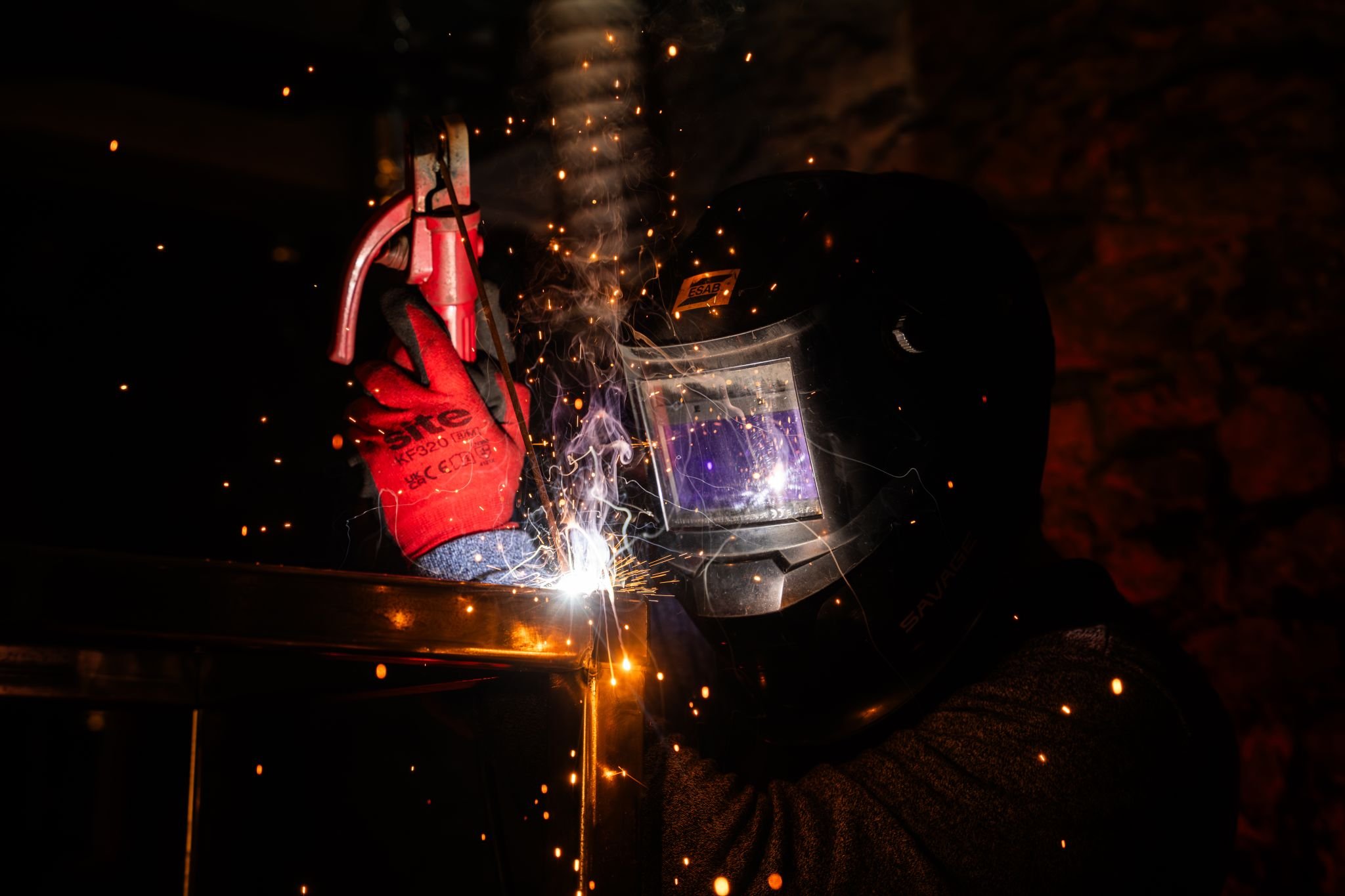MIG vs TIG vs MMA Welding
Which Welding Process should you pick?
Whether you’re starting your welding journey or looking to expand your skills, understanding the different welding processes and why you would pick each one can be complicated. At The Weld Space, we’ve guided hundreds of welders through MIG, TIG, and MMA welding. Similar questions always pop up, which is the best welding process for me. Each method has its strengths and weaknesses, and choosing the right one depends on your project, material, skill level and ultimately cost. How much are you willing to invest to get going and continue to weld.
In this blog, we’ll break down the advantages and disadvantages of TIG, MIG, and MMA welding, helping you make an informed decision.
Explore different Welding Processes, Skills and Knowledge Online. Explore our range of online courses.
MIG Welding
See a detailed break down in the original blog here. Here are some important bits of information to consider. MIG (Metal Inert Gas) welding is a popular choice for both beginners and professionals. It uses a continuously fed wire electrode and an inert shielding gas to join metals.
What a MIG Welder Looks Like
MIG Welding in Action
Advantages of MIG Welding:
Easy to Learn – MIG is beginner-friendly, making it ideal for hobbyists and DIY projects.
Fast and Efficient – Continuous wire feed allows for quicker welding compared to other processes.
Versatile – Works on a variety of metals, including mild steel and with additional accessories you can weld stainless steel and Aluminum
Cleaner Welds – The shielding gas helps reduce oxidation and produces a smoother finish. You can use a MIG Welder without Gas. Called Gasless MIG Welding or Flux Core. See our separate Blog post about that here.
Disadvantages of MIG Welding:
Equipment Costs – MIG welding requires a buying a more expensive MIG Welder, Wire and and Shielding gas bottle, which can be expensive for small setups.
Less Suitable for Outdoors – Shielding gas can be blown away by wind, causing weld defects.
Limited on Thick Metals – For very thick materials, MIG may require multiple passes to achieve strong penetration. Most beginner friendly machines can weld up to 6mm thick metal.
MIG welding is a great starting point if you want speed, ease of use, and versatility in your projects.
MIG Welding Correct Example
MIG Welding Correct Example
MIG Welding for the first time.
MMA Welding
See a detailed break down of Manual Metal Arc Welding here. However, these are the important elements that make up MMA (Manual Metal Arc) welding, also called slang terms of stick, arc or rod welding. It uses a consumable electrode coated in powdered flux. The flux creates a shielding gas when melted/burned, protecting the weld pool from contamination.
MMA Welding Equipment
MMA Welding in action
Advantages of MMA Welding:
Simple Equipment – Only required to purchase a MMA machine - which are normally low cost and electrodes are needed, making it simple to get started.
Works in All Conditions – Excellent for outdoor work, even in windy or damp environments.
Strong Welds – Provides deep penetration for thick materials, making it ideal for heavy-duty metal.
Disadvantages of MMA Welding:
Steeper Learning Curve – Requires more skill to maintain a consistent arc and avoid defects - so practise is needed.
Material Limitations – Due to the larger diameter electrode the MMA Welding Process is more suitable to thicker Material
Not as Versatile - It’s mainly suitable for Welding Mild Steel. Although other materials are possible they require a high level of skill.
MMA welding is perfect for outdoor projects, heavy-duty repairs, and situations where portability is key.
MMA Weld Done Correctly
MMA Weld done incorrectly
TIG Welding
See a more detailed break down of TIG Welding here. TIG (Tungsten Inert Gas) welding uses a non-consumable tungsten electrode and an inert shielding gas (Argon) to produce precise welds. Filler material may or may not be added, depending on the joint.
TIG Welder with a Foot Pedal.
TIG welder in action
Advantages of TIG Welding:
High Precision – Ideal for detailed work and thin materials.
Cleanest Welds – Produces smooth, visually appealing welds with minimal spatter.
Versatile Materials – Works on aluminium with an AC/DC Tig Welder, stainless steel, and exotic metals.
Control – Provides excellent control over heat input and weld bead shape.
Disadvantages of TIG Welding:
Slower Process – TIG welding is slower than MIG and MMA, especially for long welds.
Requires Skill – Learning TIG takes practice, particularly for controlling filler material and maintaining a steady hand.
Equipment Costs – TIG welding machines can be more expensive, and the process requires shielding gas.
TIG welding is the go-to process for high-quality finishes, delicate materials, and professional fabrication.
TIG Welds on Mild Steel
Learning to TIG Weld
Classic TIG Welding errors.
Choosing the Right Welding Process
The choice between MIG, MMA, and TIG depends on:
Skill Level: Beginners often start with MIG, while experience welders may prefer TIG.
Project Type: MMA is ideal for outdoor or heavy-duty repairs; TIG excels in precision work.
Materials: Aluminium and stainless steel often require TIG, whereas steel can be welded with any method.
Speed vs. Quality: MIG is fast, TIG is precise, and MMA balances strength and versatility.
By understanding the strengths and weaknesses of each process, you can select the right welding method for your project and develop your skills effectively.
At The Weld Space, we provide courses and hands-on experience in MIG, TIG, and MMA welding. Whether you’re starting from scratch or refining your technique, our expert guidance will help you become confident in any welding process.
Explore our welding courses and start your journey today!















